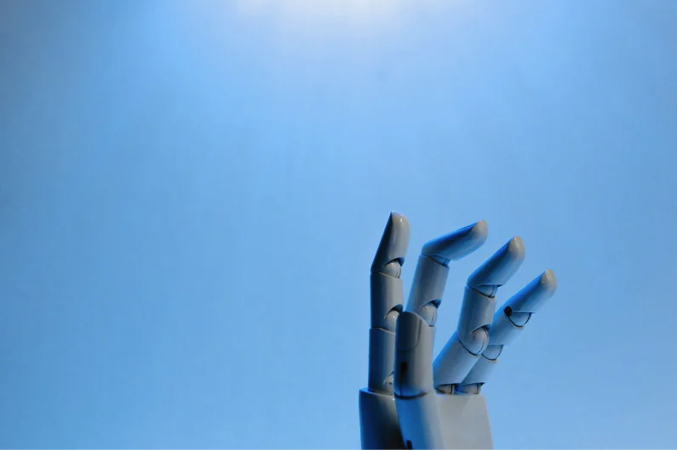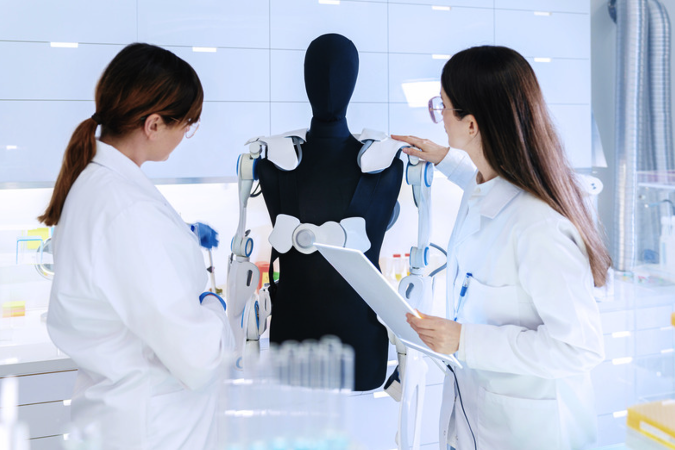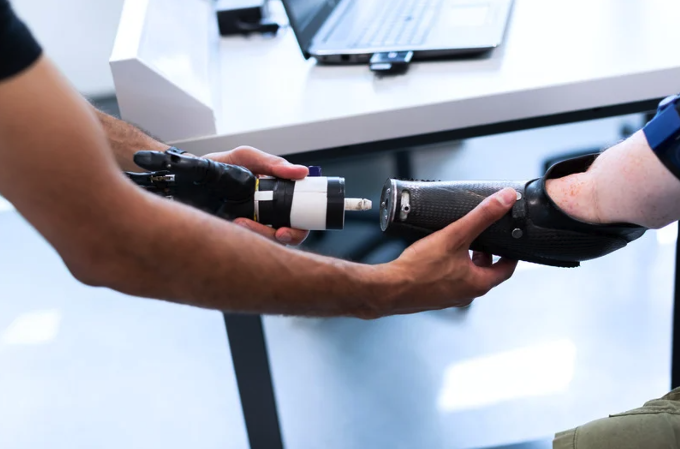
Tech for Health is an increasingly discussed topic, highlighting how robotics and automation are cornerstones of Industry 4.0 and are now driving advancements in accessibility, empowering individuals with disabilities, and reshaping their daily experiences. These technologies promote independence and autonomy while combating social stigma by fostering inclusive environments. From exoskeletons and bionic limbs to assistive devices for individuals with visual or hearing impairments, as well as those with degenerative conditions, assistive robotics offers groundbreaking solutions. However, challenges remain in fully integrating these technologies into everyday life.

We have already discussed robotic nurses and how they can become valuable assistants in caring for the elderly and individuals with disabilities.
Tech for Health’s implementation spans various fields, from physical rehabilitation support to assistance for cognitive disabilities.
Also referred to as robot suits or motorized exoskeletons, these devices adapt to the body’s movements through advanced algorithms. They are designed for full-body use or specific limbs. These exostructures restore lost functionality, address musculoskeletal issues, assist physiotherapists in treating patients with motor and cognitive disabilities, and aid in the rehabilitation of hospitalized individuals. Their introduction marks a significant breakthrough in the field of medicine.
3D printing is helping to make assistive devices that meet the needs of disabled people, such as prosthetic limbs. Robotics coupled with Brain-Computer Interface (BCI) has led to bionic hands, arms, and legs that connect to nerves. The most innovative ones already transmit sensations, such as the cold and warmth of objects touched with the MiniTouch robotic hand.
For developing the most advanced bionic legs, their creator, Hugh Herr, a two-legged amputee from a climbing accident and bionics expert at MIT (Massachusetts Institute of Technology), received the 2016 Princess of Asturias Award for Technical and Scientific Research. He is now working on the next generation of bionic prostheses, such as a new interface for connecting bodies to prosthetic devices based on small magnetic implants (magneto micrometry).

An example of the new frontiers in Tech for Health is the WalkON Suit F1, developed by researchers at KAIST. This wearable robot is designed for individuals with complete paralysis, enabling them to wear and use it independently from their wheelchairs. The latest version improves on previous models by incorporating a frontal-docking method, allowing users to put it on without the need for external assistance. The suit also features advanced balance control for hands-free operation, enhanced motors, AI-powered obstacle detection, and supports upright walking.
When we talk about Tech for Health, it’s essential to take a holistic approach, where the concept of health is closely tied to overall well-being. For individuals with disabilities, this approach is crucial in overcoming difficult-to-overcome sensory barriers. We’re no longer just talking about devices that measure vital signs or sound alarms but expanding into a much broader dimension of assistive technology.
One example of this is the Tatum T1 robotic hand, designed to communicate in sign language, specifically created to help individuals with deafblindness. This innovative prototype can translate English text—whether from emails, books, or the internet—into sign language, bridging a critical communication gap for those with visual and hearing impairments. Thanks to advancements in robotics, individuals who are both blind and deaf can significantly improve their quality of life.
Another exciting development is the progress of robotic guide dogs. These devices, which use technologies like LiDAR, IoT sensors, and artificial intelligence, can autonomously detect spaces, identify people, and avoid obstacles, revolutionizing mobility for people with visual impairments. These examples show how the integration of technology is not just about assisting with mobility or communication but about transforming lives by overcoming sensory challenges.
AI-powered technologies are fundamentally transforming education for students with disabilities, particularly those with learning challenges. Tools like social robots, translation software, and data analytics are helping children with autism, ADHD, hearing impairments, and dyslexia, creating a more inclusive learning environment.
Social robots, designed to interact with children, play a significant role in teaching social and educational skills. These robots are particularly effective for students with autism, as their non-judgmental nature makes interactions more comfortable. For example, robots like Jibo engage children in interactive activities, modeling behaviors like making eye contact and focusing attention. The goal isn’t to replace teachers but to enhance social learning and help children develop essential skills through human-machine interaction.
AI is also being integrated into video games, such as Vanderbilt University’s “Film Detective,” which teaches emotional intelligence and social skills to children with autism. In the game, children analyze movie clips to interpret the emotions of characters, helping them build a better understanding of others’ feelings and perspectives.
For deaf students, AI is improving accessibility with tools like advanced speech-to-text software and smart glasses that display subtitles directly on lenses. Collaborations, such as the one between the National Technical Institute for the Deaf and Microsoft, are enhancing these technologies to provide better classroom experiences for deaf students.
Robotic technologies are increasingly performing daily tasks, from dressing and feeding to transferring patients, significantly reducing the burden on caregivers. Innovations such as intelligent walkers, robotic feeders, and repositioning devices are improving the quality of life and promoting independence for individuals with disabilities.
The ambitious future of “Tech for Health” looks promising. As artificial intelligence for robotics and machine learning continue to evolve, these technologies will become even more capable, affordable, and accessible, with researchers predicting that robots will play a key role in enhancing the independence and quality of life for millions of disabled individuals worldwide.
We’re here to help! Whether you have questions, need support, or want to know more about us and our services, fill out the form below and our team will get back to you promptly.
Let’s explore the future of AI and robotics together.
